
How to Use Relay Module 2 Channel: Examples, Pinouts, and Specs
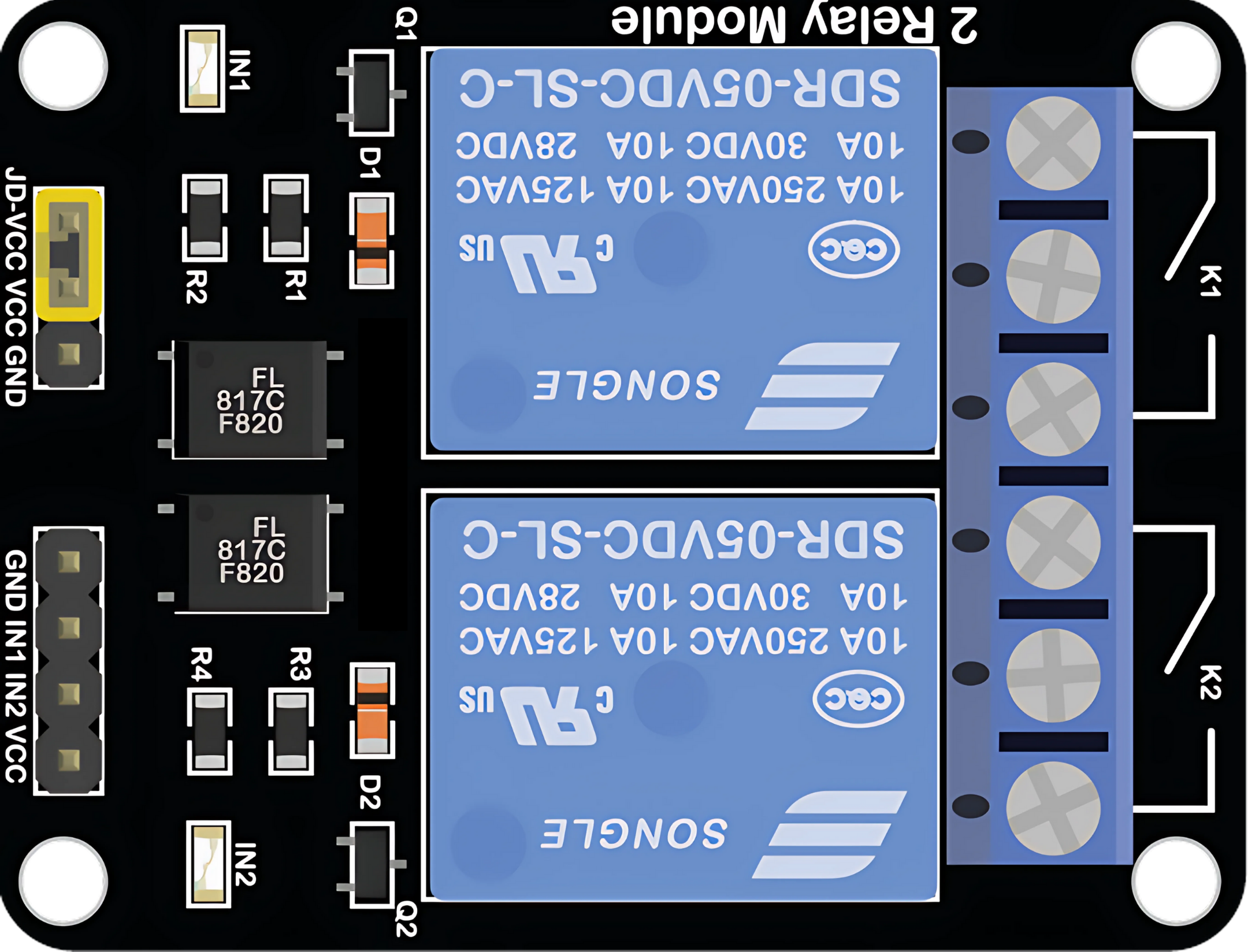
 Design with Relay Module 2 Channel in Cirkit Designer
Design with Relay Module 2 Channel in Cirkit DesignerIntroduction
A Relay Module 2 Channel is an electronic device that enables control of high voltage and high current loads with low voltage signals, typically from a microcontroller like an Arduino. This module contains two independent relays that can switch on and off separately. It is commonly used in home automation, industrial controls, and other applications where interfacing between low-level logic and high-power devices is required.
Explore Projects Built with Relay Module 2 Channel
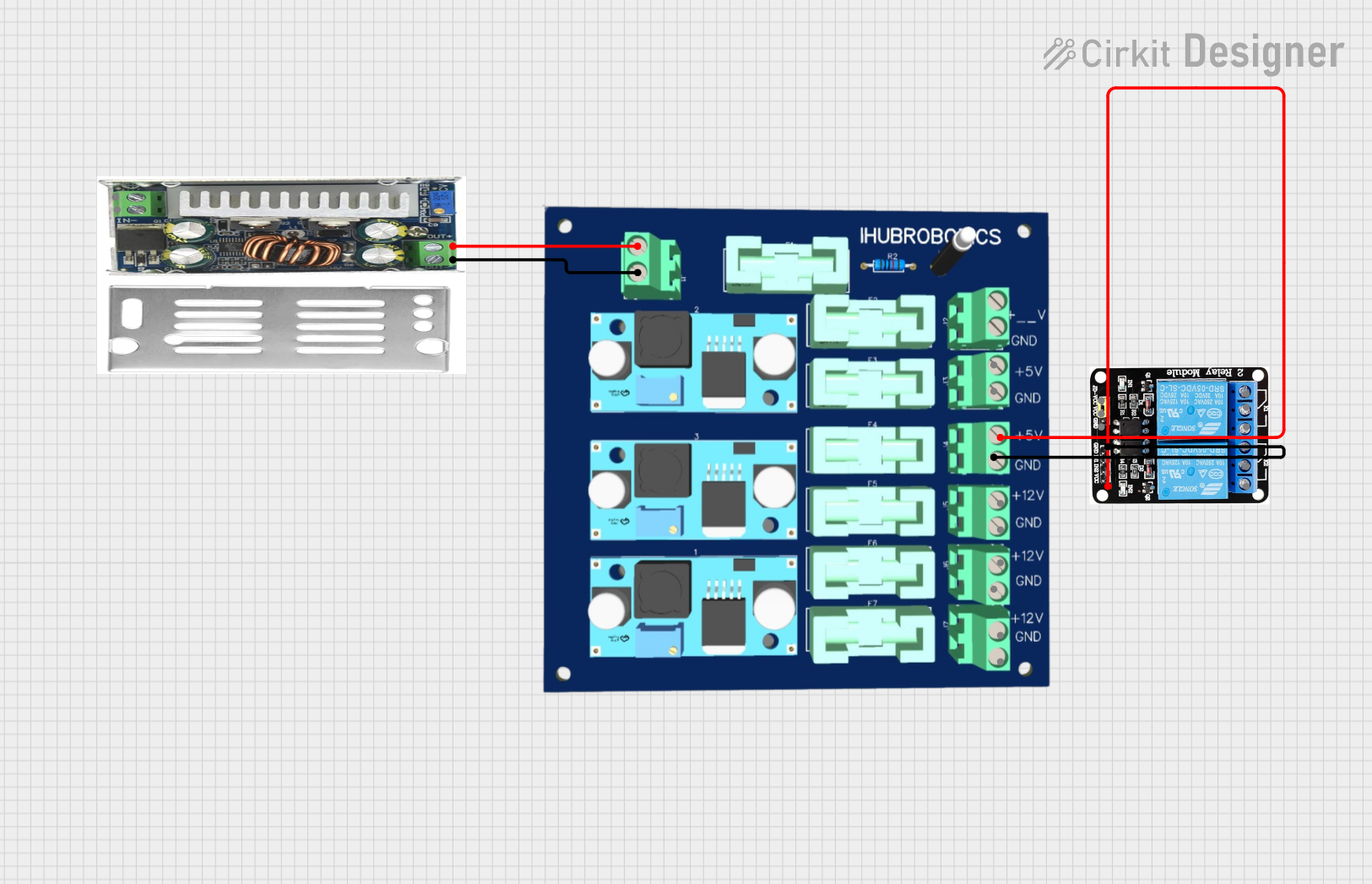
 Open Project in Cirkit Designer
Open Project in Cirkit Designer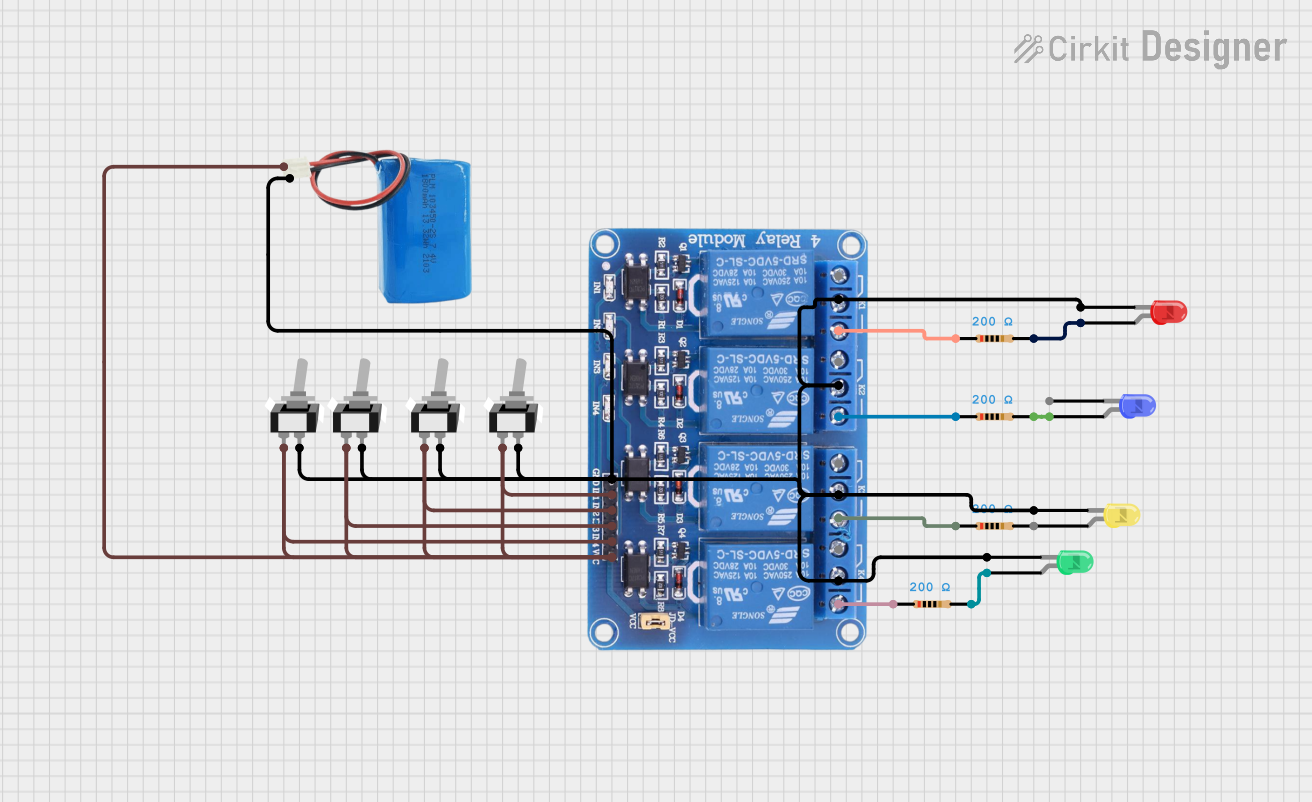
 Open Project in Cirkit Designer
Open Project in Cirkit Designer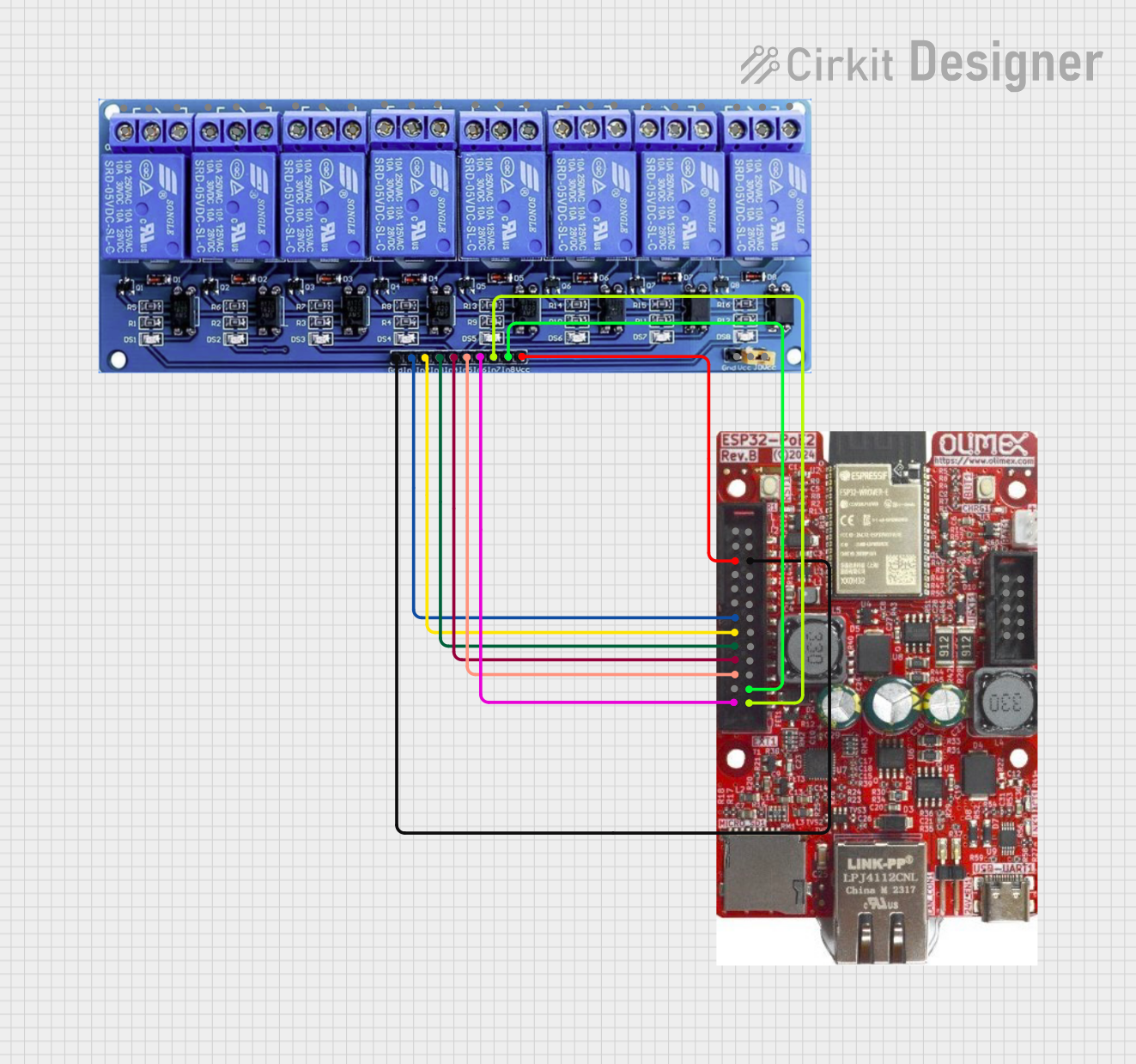
 Open Project in Cirkit Designer
Open Project in Cirkit Designer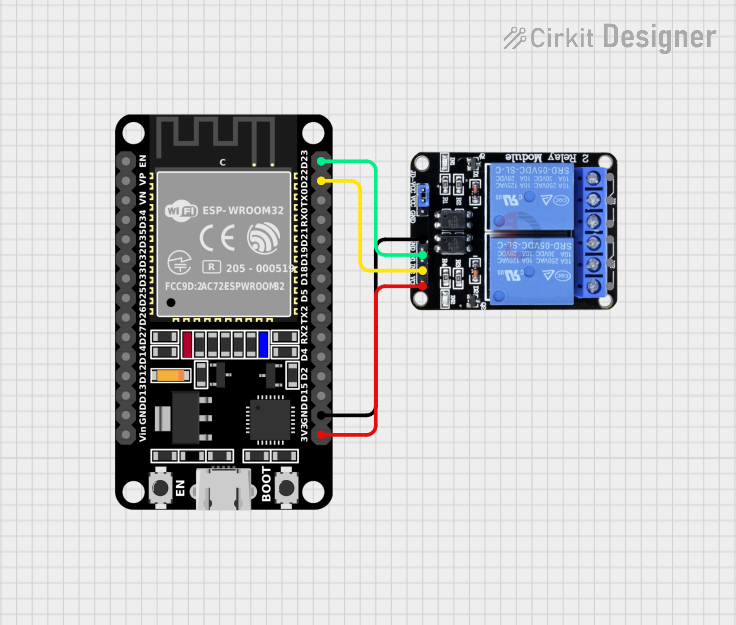
 Open Project in Cirkit Designer
Open Project in Cirkit DesignerExplore Projects Built with Relay Module 2 Channel

 Open Project in Cirkit Designer
Open Project in Cirkit Designer
 Open Project in Cirkit Designer
Open Project in Cirkit Designer
 Open Project in Cirkit Designer
Open Project in Cirkit Designer
 Open Project in Cirkit Designer
Open Project in Cirkit DesignerCommon Applications and Use Cases
- Home automation systems (e.g., controlling lights, fans, or heating)
- Industrial machine control
- Remote control of high-power circuits
- Automotive electronics for controlling lights, alarms, etc.
Technical Specifications
Key Technical Details
- Operating Voltage (VCC): 5V DC
- Trigger Voltage (IN1, IN2): 0-5V DC
- Max Switching Voltage: 250V AC / 30V DC
- Max Switching Current: 10A per channel
- Relay Type: Electromechanical
- Number of Channels: 2
- Isolation: Opto-isolated inputs
Pin Configuration and Descriptions
| Pin | Description |
|---|---|
| VCC | Connect to 5V power supply |
| GND | Connect to ground |
| IN1 | Control signal for Relay 1 (active LOW) |
| IN2 | Control signal for Relay 2 (active LOW) |
| NO1 | Normally Open contact for Relay 1 |
| NC1 | Normally Closed contact for Relay 1 |
| COM1 | Common contact for Relay 1 |
| NO2 | Normally Open contact for Relay 2 |
| NC2 | Normally Closed contact for Relay 2 |
| COM2 | Common contact for Relay 2 |
Usage Instructions
How to Use the Component in a Circuit
- Connect the VCC pin to a 5V power supply.
- Connect the GND pin to the ground of the power supply.
- Connect the IN1 and IN2 pins to the digital outputs of a microcontroller.
- Connect the device you want to control to the NO or NC and COM pins of the relay.
Important Considerations and Best Practices
- Ensure the power supply can deliver sufficient current for the relay coil.
- Do not exceed the maximum switching voltage and current ratings.
- Use flyback diodes across inductive loads to prevent back EMF damage.
- Consider using a separate power supply for the relay coils to prevent noise in the microcontroller circuit.
Example Code for Arduino UNO
// Define relay control pins
const int relayPin1 = 2;
const int relayPin2 = 3;
void setup() {
// Set relay pins as output
pinMode(relayPin1, OUTPUT);
pinMode(relayPin2, OUTPUT);
// Initialize relays to OFF (Relays are active LOW)
digitalWrite(relayPin1, HIGH);
digitalWrite(relayPin2, HIGH);
}
void loop() {
// Turn on Relay 1
digitalWrite(relayPin1, LOW);
delay(1000); // Wait for 1 second
// Turn off Relay 1
digitalWrite(relayPin1, HIGH);
delay(1000); // Wait for 1 second
// Turn on Relay 2
digitalWrite(relayPin2, LOW);
delay(1000); // Wait for 1 second
// Turn off Relay 2
digitalWrite(relayPin2, HIGH);
delay(1000); // Wait for 1 second
}
Troubleshooting and FAQs
Common Issues Users Might Face
- Relay not activating: Check the control signal voltage and connections.
- Intermittent operation: Ensure a stable power supply and check for loose connections.
- Clicking sound but no switching: Verify the load does not exceed the relay's rating.
Solutions and Tips for Troubleshooting
- Always double-check wiring, especially the load's power connections.
- Test the relay module with a multimeter to ensure proper function.
- If using inductive loads, make sure to use flyback diodes to protect the relay contacts.
FAQs
Q: Can I control the relay module with a 3.3V signal? A: While the relay module is designed for 5V logic, some modules may work with 3.3V signals. Check the module's datasheet or test it with a 3.3V signal.
Q: How can I know if the relay is in the NO or NC state? A: When the relay is not powered, the NO contact is open, and the NC contact is closed. Applying a LOW signal to the IN pin will switch the relay to the opposite state.
Q: Is it safe to switch AC loads with this relay module? A: Yes, as long as the load does not exceed the maximum voltage and current ratings of the relay. Always follow safety precautions when working with AC mains.